Understanding the Psychology Behind Deception and Emotional Manipulation
Have you ever wondered if your business partner is a con artist? Perhaps you’ve noticed a pattern where their stories don’t quite add up, where their accomplishments seem to exist only in conversation, or where every failure has an elaborate explanation that somehow positions them as the victim. Maybe you’ve watched them charm their way through situations with nothing but words, leaving you with an uneasy feeling that something fundamental is missing beneath the surface.
The psychology of a con artist is far more complex than simple greed or malice. At its core lies a profound emotional addiction that drives behavior patterns rooted in Cluster B personality disorders. These individuals aren’t necessarily motivated by money or power alone. Instead, they’re driven by an insatiable need for specific emotional experiences that they cannot abandon, even when honesty would serve them better financially, professionally, or personally.
Before we delve deeper, it’s crucial to understand that there’s a significant difference between having traits of a personality disorder and meeting the full criteria for a diagnosed condition. We all share some characteristics with these disorders—believing we’re special in some way, wanting recognition for our efforts, or feeling hurt when others don’t appreciate us. These are normal human experiences at lower intensities. What transforms these common traits into pathological patterns is their intensity, pervasiveness, and the dysfunction they create in every area of life.
A personality disorder diagnosis must also be understood within cultural context—what might be pathological in one culture could be adaptive in another. The con artist we’re examining here isn’t someone who simply exaggerates occasionally or seeks recognition in healthy ways. They’re individuals whose entire existence revolves around deception, whose need for specific emotional states overrides all other considerations, and whose manipulations create consistent patterns of destruction in their wake.
The Shared Features of Cluster B Personality Disorders in Con Artist Psychology
Cluster B personality disorders encompass Antisocial, Borderline, Histrionic, and Narcissistic Personality Disorders. While each has distinct characteristics, they share common features that create the perfect psychological storm for con artist behavior. These shared traits include emotional intensity, impulsivity, unstable relationships, and most critically, manipulative behaviors that serve to protect a fragile sense of self.
Much like how dopamine disorders share overlapping features and presentations, Cluster B personality disorders exist on a spectrum of shared characteristics. A skilled con artist will often pivot fluidly between different presentations depending on what the situation demands. When confronted with uncomfortable truths or challenges to their narrative, they may shift from narcissistic grandiosity to borderline victimhood to histrionic overwhelm to antisocial aggression, all within a single conversation. This fluidity isn’t conscious strategy as much as it is an unconscious survival mechanism, a desperate search for whichever presentation will allow their ego to be reflected back at them in the way they need.
What unites these disorders in the context of con artistry is not merely the presence of deception, but the compulsive nature of that deception. These individuals have learned, often from early childhood trauma and developmental wounds, that their authentic self is not safe in the world. They’ve internalized the message that love, security, and emotional safety are never given freely but must be extracted through performance, manipulation, or control.
The con becomes more than a strategy; it becomes an identity. It’s a fortress built around a hollow core, designed to protect against the unbearable vulnerability of being truly seen and potentially rejected. This is why these individuals continue their deceptive patterns even when the costs far outweigh the benefits. They’re not making rational calculations about risk and reward. They’re feeding an addiction to a feeling that temporarily fills an emotional void so profound that its absence feels like psychological death.
The Addiction to Feeling: Understanding Each Disorder’s Emotional Drug
Narcissistic Personality Disorder: Addicted to Superiority and Admiration
For those with Narcissistic Personality Disorder, the addictive feeling is one of grandiosity, superiority, and being special. They construct elaborate false narratives about their achievements, connections, and talents not simply to impress others, but to maintain an internal emotional state that protects them from confronting their deep-seated feelings of worthlessness and shame.
The narcissistic con artist doesn’t just want your money or resources. They want your admiration, your envy, and most importantly, your confirmation that they are as exceptional as they desperately need to believe. They may fabricate degrees, exaggerate accomplishments, or create entire fictional histories of success. Each lie serves as a hit of their emotional drug of choice: the feeling of being extraordinary in a world where being ordinary feels like annihilation.
What’s crucial to understand is that these individuals require their ego to be reflected back at them in very specific ways. If praised by someone they deem insufficiently important, they’ll rage about the slight for days. If recognized by those of moderate status but ignored by those they aspire to impress, it drives them to distraction. They pivot constantly, searching for whatever narrative or presentation will get them the reflection they need. When confronted with evidence that contradicts their self-image, they don’t adjust their self-perception; instead, they’ll shift their entire presentation, alternating between grandiosity, victimhood, or whatever stance allows them to maintain their inflated self-concept.
Their childhood often featured impossible standards where love was contingent upon being perfect, special, or superior to others. They learned that their true self, with all its human limitations and vulnerabilities, was fundamentally unacceptable. The con becomes their way of manufacturing the admiration and validation that should have been given unconditionally in childhood.
Antisocial Personality Disorder: Addicted to Power and Control
Individuals with Antisocial Personality Disorder are addicted to the intoxicating feelings of power, dominance, and the thrill of outsmarting others. Their con artistry often appears more calculated and predatory because they’ve learned to see the world as a hostile environment where only the strong survive.
Their emotional addiction centers on feeling invulnerable and in control. They manipulate not just for material gain but for the psychological high of knowing they’ve dominated another person. The con provides them with proof that they are smarter, stronger, and more capable than their victims. It’s a way of asserting their existence in a world that they perceive as fundamentally threatening.
These individuals often grew up in environments characterized by abuse, neglect, or chaos where trust was dangerous and vulnerability was exploited. They learned early that emotional safety came only through dominance and that authentic connection was a luxury they couldn’t afford. The con becomes their primary way of relating to others because genuine connection requires a vulnerability they’ve spent their entire lives avoiding.
Borderline Personality Disorder: Addicted to Intensity and Connection
For those with Borderline Personality Disorder, the addiction is to emotional intensity and the desperate avoidance of abandonment. Their version of the con often involves creating dramatic situations, testing relationships through deception, or manipulating others to prove their loyalty and love.
The borderline con artist isn’t typically motivated by material gain. Instead, they’re driven by an overwhelming need to fill the chronic emptiness that characterizes their inner experience. They may create false crises, exaggerate illnesses, or construct elaborate deceptions designed to elicit caregiving and prove that others won’t abandon them.
Their childhood typically featured inconsistent caregiving, where love was unpredictable and abandonment was a constant threat. They learned that ordinary, stable connection wasn’t enough to ensure safety. Only through intensity, drama, and sometimes deception could they momentarily feel secure in their relationships. The con becomes a test: “Will you still love me if you discover I’ve lied? Will you stay even when things get complicated?”
Histrionic Personality Disorder: Addicted to Attention and Being Seen
Individuals with Histrionic Personality Disorder are addicted to being the center of attention, to feeling desired and important. Their con artistry often takes the form of elaborate performances, exaggerated stories, and theatrical displays designed to captivate and seduce their audience.
The histrionic con artist creates false personas not for money but for the emotional high of being admired, desired, and needed. They may exaggerate their accomplishments, create dramatic personal histories, or constantly reinvent themselves to maintain others’ interest. The con is less about deception for gain and more about avoiding the unbearable feeling of being invisible or unimportant.
Their developmental history often includes caregivers who only paid attention during moments of crisis or performance. They learned that being authentic and ordinary meant being overlooked, while being dramatic and larger than life meant being loved. The con becomes their way of ensuring they’re never forgotten or ignored.
The Emotional Emptiness
There’s a profound scene in The Sopranos that therapists often reference when discussing Cluster B personality disorders. Tony Soprano, the show’s narcissistic and antisocial protagonist, repeatedly shows more genuine emotion toward animals, particularly ducks and horses, than toward the humans in his life. This isn’t coincidental. It reflects a deep psychological truth about these disorders.
Individuals with Cluster B traits often overidentify with animals, babies, and other beings they perceive as pure and uncomplicated. These creatures represent the tabula rasa, the blank slate that mirrors their own emotional emptiness. Animals don’t judge, don’t abandon, and don’t require the complex emotional reciprocity that human relationships demand. They offer unconditional acceptance without the risk of exposure or rejection.
This overidentification reveals the profound emotional emptiness at the core of the con artist’s psychology. They’re drawn to beings that reflect their own internal void while simultaneously providing the unconditional acceptance they’ve never experienced from humans. It’s why many con artists surround themselves with pets, speak more tenderly to animals than people, or show genuine distress at animal suffering while remaining callously indifferent to the humans they manipulate.
This emotional emptiness isn’t a choice or a moral failing. It’s the result of developmental trauma that prevented the formation of a stable, integrated sense of self. The con artist’s manipulations, deceptions, and false personas are attempts to fill this void, to create an identity where none exists organically.
The Martyr Narcissist: The Hidden Con Artist Among Us
While we might imagine con artists as flashy, obvious predators like cult leaders or pyramid scheme architects, one of the most pervasive and difficult to detect forms is what professionals are increasingly recognizing as the “martyr narcissist” or “covert narcissist martyr.” This subtype has perfected the art of hiding in plain sight, often in helping professions where their particular brand of manipulation can flourish undetected.
The martyr narcissist presents as self-sacrificing, eternally suffering, and perpetually victimised by the very people they claim to help. They appear to put others’ needs before their own, working tirelessly without recognition or reward. But beneath this facade lies the same narcissistic hunger for admiration and control that drives more overt narcissists. The difference is in their strategy: they’ve learned that playing the victim and the hero simultaneously provides a more socially acceptable way to extract narcissistic supply.
These individuals often tell elaborate stories of their sacrifices, their unappreciated efforts, and the endless ways others have failed or betrayed them. Every interaction becomes an opportunity to reinforce their narrative of noble suffering. They may work in therapy, teaching, healthcare, or religious settings where the “wounded healer” archetype provides perfect cover for their manipulations.
A crucial characteristic that betrays the martyr narcissist is their persistent overestimation of their own intelligence and abilities. This isn’t simple confidence or self-assurance; it’s a delusional belief in their superiority that prevents them from accurately assessing their own limitations. This overestimation likely stems from their lack of genuine empathy, which impedes their ability to accurately compare themselves to others. They cannot truly understand others’ perspectives or abilities, so they default to assuming their own superiority.
This intellectual grandiosity makes them particularly dangerous in professional settings. They may practice therapy without proper credentials, dispense medical advice without training, or teach complex subjects they barely understand. When confronted with their lack of qualifications, they pivot to explanations about how traditional credentialing systems fail to recognise true talent, or how their unique life experiences provide superior wisdom to formal education. They’ll appropriate terminology from legitimate fields, cobbling together impressive-sounding but ultimately hollow frameworks that can fool those without specialised knowledge.
What makes the martyr narcissist particularly dangerous is their ability to prey on genuinely empathetic individuals who relate to the wounded healer narrative. They infiltrate communities of authentic helpers, therapists, and healers by speaking the language of trauma, recovery, and service. They know exactly what to say to make others feel understood while simultaneously positioning themselves as the ultimate victim who deserves special treatment and endless validation, but of course, no accountability.
What’s sick and kind of sad is that while many cluster b personality disorders are motivated by a fear of shame and loneliness, the martyr narcissist preys on those that they convince are sick and need help because of their deep gear of being unimportant, unintelligent or insignificant. Lacking the ability to accomplish or be held accountable by any objective metric their fear of not being special and important becomes an self fulfilling prophecy so that keeps them from they ever being capable of anything more than deceit and enabling.
The Childhood Scene: When Deception Became Survival
Nearly every con artist can trace their behavioural patterns back to a specific type of childhood scene, a moment or series of moments when they discovered that deception worked better than authenticity. Perhaps they successfully manipulated a parent into believing a lie and felt the intoxicating rush of power. Maybe they learned that performing false emotions got them the attention that genuine feelings never could. Or they discovered that creating elaborate stories made them interesting in ways their real self never seemed to be.
This discovery creates what psychologists call a “template scene” that gets replayed throughout their lives. The child who learned they could fake illness to get nurturing becomes the adult who creates medical crises for attention. The child who discovered that lying about achievements earned praise becomes the adult who fabricates entire careers and accomplishments.
But it goes deeper than simple reinforcement. These children also developed a superiority complex around their ability to deceive. They began to see others as gullible, naive, or stupid for believing their lies. This contempt for their victims serves a protective function: it allows them to avoid confronting the painful reality that they’re lying because they believe their true self is fundamentally unlovable.
Even when these individuals could be genuinely understood and accepted, they can’t resist the pull of deception. They need to feel in control of how others perceive them. Authentic connection requires vulnerability and trust, two things their childhood experiences taught them were dangerous. The con provides the illusion of connection while maintaining complete control over the narrative.
The Master Manipulator’s Playbook: Exploiting the Need to Be Special
The most skilled con artists possess an almost supernatural ability to identify what their victims need to believe about themselves. They become experts at reading people’s deepest insecurities and unfulfilled dreams, then positioning themselves as the unique person who can validate those needs. This isn’t merely observation; it’s a refined predatory instinct developed over years of practice.
The process typically begins with careful attention to what makes their target light up. What stories do they tell about themselves? What accomplishments do they emphasise? What failures do they explain away? The con artist listens not for facts but for the underlying need: the therapist who feels unrecognized by traditional institutions, the entrepreneur who believes they’re ahead of their time, the artist who thinks the world doesn’t understand their genius.
Once identified, the con artist becomes the perfect mirror for these needs. They offer explanations for why the world hasn’t recognised the victim’s true worth. They provide alternative frameworks that bypass traditional requirements or credentials. Most crucially, they position themselves as the only person who truly understands and can facilitate the victim’s special destiny.
This dynamic creates a powerful dependency. The victim needs the con artist not just for practical support but for their very sense of self. When someone has spent years feeling like their true worth is unrecognised, finding someone who finally “sees” them feels like salvation. The con artist exploits this vulnerability by gradually making themselves the sole source of this validation, creating a relationship where the victim will defend the con artist against any criticism because attacking the con artist means attacking their own inflated self-concept.
Mythologizing the Past: The Con Artist’s Historical Revision
One of the most telling signs of a con artist is their tendency to mythologize their past relationships, particularly with parents, mentors, employers, or claimed celebrity connections. These stories serve multiple functions in maintaining their false identity and extracting emotional or material resources from new victims.
The mythologized parent is often presented in extremes: either as an impossibly perfect figure whose standards the con artist is perpetually trying to meet, or as a villain whose abuse explains and excuses all current manipulative behaviour. These narratives are carefully crafted to elicit specific responses from their audience. The perfect parent story invites admiration for the con artist’s impressive lineage, while the villainous parent story demands sympathy and provides blanket justification for any questionable behaviour.
Former employers and colleagues are similarly mythologized. The con artist was always the unrecognized genius, the hardest worker who was betrayed by jealous supervisors, or the innovative thinker whose ideas were stolen by less talented peers. These stories follow predictable patterns: the con artist is always the hero or the victim, never simply a regular employee who did average work.
Celebrity affiliations and name-dropping serve to borrow credibility and create an aura of importance. The con artist always seems to have connections to famous or powerful people, though these connections inevitably prove impossible to verify. They were always “close personal friends” with someone impressive, though curiously, these relationships never seem to manifest in any tangible way.
The Telltale Signs: Nothing to Show for Years of “Work”
Perhaps the most reliable indicator that someone is a con artist rather than simply unlucky or misunderstood is the complete absence of genuine accomplishment despite years of apparent effort. It’s extremely difficult for someone to work effectively for years and genuinely have nothing to show for it. Even individuals who face significant challenges typically accumulate something: skills, knowledge, relationships, or tangible work products.
The con artist, however, often has nothing but stories. They can talk brilliantly about their plans, their past achievements, and their future potential, but when pressed for specifics, everything becomes vague or complicated by external circumstances. Their expertise exists only in conversation. They know the terminology of their claimed field but lack the deep, practical knowledge that comes from actual experience.
This absence extends beyond professional accomplishment to personal relationships. The con artist typically lacks genuine, long-term friendships. Their relationships are either very new, maintained at a careful distance, or characterized by exploitation. People who’ve known them for years often report feeling like they never really knew them at all. The con artist’s inability to maintain authentic relationships stems from the same source as their professional failures: they’re performing rather than being, and performance is exhausting to maintain over time.
Their knowledge base reveals similar patterns. Despite claiming expertise in various areas, their understanding remains superficial. They’re skilled at parroting information they’ve heard from others but struggle when asked to apply knowledge in novel ways or explain complex concepts from first principles. This is because they’ve spent their energy learning to talk about subjects rather than genuinely understanding them.
The Universal Narrative: Long-Suffering Heroes Let Down by Everyone
If you listen carefully to a con artist’s stories over time, you’ll notice a consistent narrative thread: they are always the long-suffering, hardworking individual who has been perpetually let down, betrayed, or sabotaged by others. This narrative serves multiple psychological functions and is perhaps the most reliable indicator of con artist psychology.
Every failure has an external explanation. Every relationship that ended was because the other person couldn’t appreciate their genuine worth. Every job loss was due to politics, jealousy, or discrimination. While anyone can experience bad luck or unfair treatment, the con artist’s stories lack the nuance and self-reflection of genuine experience. They never admit to meaningful mistakes, never acknowledge their role in negative outcomes, and never seem to learn from their experiences.
This narrative positioning accomplishes several goals. First, it preemptively excuses any failure or inconsistency in their story. Second, it positions them as deserving of special treatment or consideration. Third, it tests potential victims’ willingness to accept their version of reality. Those who express skepticism are quickly discarded, while those who offer sympathy become targets for further manipulation.
The con artist’s inability to acknowledge their own failures or mistakes isn’t simple pride or defensiveness. It’s a survival mechanism. Their entire identity is built on the false narrative they’ve created. Admitting to genuine fault would require acknowledging that their constructed self is false, potentially triggering the emotional annihilation they’ve spent their lives avoiding.
The Shape-Shifting Con: When Confrontation Triggers Transformation
One of the most revealing aspects of con artist psychology is what happens when they’re confronted with uncomfortable truths or challenges to their narrative. Rather than engaging with the criticism or showing genuine reflection, they shift rapidly between different personality disorder presentations, searching desperately for whichever stance will allow their ego to be reflected back at them in the way they need.
When caught in a lie or confronted with evidence of wrongdoing, watch how quickly they pivot. They may begin with narcissistic denial and grandiosity: “You simply don’t understand my vision.” When that fails, they might shift to borderline victimhood: “I’m being abandoned and attacked by everyone I’ve tried to help.” If that doesn’t work, histrionic overwhelm emerges: “This is too much, I’m having a breakdown, I can’t handle all this pressure.” They might even pivot to antisocial aggression: “You’re all against me and I’ll destroy anyone who tries to bring me down.”
This shape-shifting isn’t calculated manipulation in the moment—it’s a frantic, unconscious scramble to find whatever presentation will restore their psychological equilibrium. They’re not choosing these responses rationally; they’re cycling through learned survival strategies, desperately seeking the one that will work in this moment. The person confronting them might feel like they’re dealing with multiple different people within a single conversation, because in a sense, they are.
The fluidity between presentations reveals the fundamental instability at the core of the con artist’s identity. Without a solid sense of self, they become whatever they need to be to maintain their ego protection. They might be a brilliant innovator one moment, a suffering martyr the next, a overwhelmed victim after that, and finally a vengeful enemy—all in service of avoiding the single truth they cannot face: that they are ordinary, flawed human beings like everyone else.
The Therapeutic Implications: Why Traditional Approaches Fail
Understanding con artist psychology through the lens of Cluster B personality disorders and emotional addiction has profound implications for treatment. Traditional therapeutic approaches often fail because they assume the client wants to change their behavior. But when the behavior is an addiction that provides essential emotional regulation, giving it up feels like death.
The con artist in therapy presents unique challenges. They may con the therapist, performing the role of the good client while maintaining their manipulative behaviors outside the therapeutic space. They might use therapy to gather new psychological vocabulary to make their manipulations more sophisticated. Or they may genuinely want to change but find themselves unable to tolerate the emotional emptiness that emerges when they stop performing.
There’s a particular paradox in treating these individuals that mirrors a fundamental truth in many high-stakes professions: you need enough ego to function, but not so much that it blinds you to reality. Just as a surgeon needs sufficient confidence to cut into a human body but must constantly question their decisions to avoid fatal errors, the con artist has developed an ego that allows them to function in their distorted reality but prevents them from seeing that reality clearly.
The therapeutic challenge is helping these individuals develop what we might call “functional ego”—enough self-worth to navigate the world without the constant performance, but with the humility to acknowledge their limitations and mistakes. This is extraordinarily difficult because their entire identity structure is built on the premise that acknowledging limitation equals annihilation.
The con artist’s overestimation of their own intelligence and abilities isn’t just narcissistic grandiosity—it’s a protective mechanism that prevents them from seeing how their behavior patterns sabotage their stated goals. They genuinely cannot understand why their brilliant schemes always fail, why relationships always end badly, why their exceptional talents go unrecognized. To see clearly would require acknowledging that they are not, in fact, more intelligent than everyone else, that their failures have internal as well as external causes, and that their “exceptional talents” exist primarily in their own minds.
Effective treatment must address the underlying emotional addiction rather than simply focusing on the deceptive behaviors. This requires helping the individual develop alternative ways of emotional regulation, building genuine self-worth that doesn’t depend on manipulation or false narratives, and most challengingly, learning to tolerate the authentic self they’ve spent their lives avoiding.
The Societal Cost: Beyond Individual Victims
The impact of con artists extends far beyond their individual victims. They create ripple effects of mistrust, cynicism, and damaged relationships throughout their communities. Their presence in helping professions is particularly damaging, as they exploit the very systems designed to heal and support vulnerable individuals.
When a martyr narcissist operates within a therapeutic or educational setting, they don’t just harm their direct victims. They damage the reputation of genuine helpers, making it harder for people to trust authentic caregivers. They create confusion about what healthy helping relationships look like, potentially causing victims to mistrust genuine empathy and care in the future.
The financial and emotional costs are staggering. Businesses fail, relationships crumble, and communities fracture around these individuals. Yet because their manipulations often fall short of explicitly criminal behavior, they frequently escape legal consequences, moving from victim to victim and community to community, leaving destruction in their wake.
Recognition and Protection: Safeguarding Against Manipulation
Protecting oneself from con artists requires understanding both their psychology and their tactics. The key is recognizing patterns rather than focusing on individual behaviors. Anyone can lie occasionally or exaggerate achievements, but con artists display consistent patterns across all areas of their lives.
Watch for the absence of verifiable accomplishments despite grand claims. Notice if someone’s expertise seems to exist only in conversation. Pay attention to relationship patterns, particularly if someone has no long-term friendships or if all past relationships allegedly ended due to the other person’s failings. Be wary of those who position themselves as perpetual victims while simultaneously claiming superior knowledge or ability.
The martyr narcissist can be particularly difficult to spot because their presentation aligns with socially valued traits like self-sacrifice and helping others. The key differentiator is the compulsive need for recognition and the subtle contempt they show for those they claim to help. Genuine helpers find intrinsic reward in their work; martyr narcissists require constant external validation and become resentful when it’s not forthcoming.
Trust your instincts when something feels off, even if you can’t immediately articulate why. Con artists are skilled at manipulation, but they can’t entirely hide the emotional emptiness at their core. There’s often a quality of interaction that feels hollow, as if you’re talking to a performance rather than a person. This uncanny valley effect is your unconscious recognition that something essential is missing.
The Path Forward: Compassion Without Enabling
Understanding the psychology of con artists through the lens of Cluster B personality disorders and emotional addiction doesn’t mean excusing their behavior or failing to protect ourselves and others from their manipulations. Rather, it provides a framework for recognizing that these individuals are not innately evil but profoundly damaged, operating from a place of desperate emotional need.
This understanding can inform more effective interventions, whether in therapeutic settings, workplaces, or personal relationships. It helps us recognize that simply confronting the lies or demanding honesty is unlikely to create change. The con artist’s deceptions are not rational choices but compulsive behaviors driven by emotional addiction and the terror of psychological annihilation.
For those who find themselves in relationships with con artists, whether personal or professional, the path forward requires firm boundaries combined with compassion for the profound emotional wounds driving the behavior. This doesn’t mean accepting manipulation or enabling deception, but rather recognizing that beneath the con artist’s elaborate false self lies a terrified child who learned that authenticity meant abandonment or annihilation.
The Tragedy of the False Self
The tragedy of the con artist is not primarily the damage they inflict on others, though that damage is real and significant. The deeper tragedy is the life unlived, the authentic self never developed or expressed, the genuine connections never formed. These individuals spend their entire lives performing, manipulating, and deceiving, all to avoid confronting an emotional emptiness that feels unbearable.
They may accumulate victims, extract resources, and temporarily feel the high of successful manipulation, but they never experience genuine love, authentic achievement, or real connection. They remain forever outside the human experiences they counterfeit, observers and imitators but never true participants.
In recognizing the signs of con artist behavior, particularly in its more hidden forms like the martyr narcissist, we protect not only ourselves but potentially offer these individuals the one thing their false selves can never achieve: being truly seen and understood. Whether they can tolerate this level of authenticity remains an open question, but understanding their psychology is the first step toward breaking the cycle of manipulation and deception that imprisons both con artist and victim alike.
The individual who has worked for years with nothing to show for it, who can explain every failure but never acknowledge fault, who speaks brilliantly but creates nothing, who claims deep connections but stands fundamentally alone, is revealing more than they know. They’re showing us the devastating cost of a life lived in perpetual performance, forever addicted to a feeling that provides temporary relief but no lasting satisfaction.
In the end, the most reliable sign of a con artist isn’t what they claim to have done or who they claim to know. It’s the hollow echo where genuine accomplishment, authentic relationships, and real knowledge should be. It’s the tragedy of a life spent talking brilliantly about living while never truly living at all.
The Antagonist of Their Own Story
In screenwriting, there’s a fundamental principle that separates protagonists from antagonists: the protagonist changes, grows, and transforms through their journey, while the antagonist remains fundamentally the same. They may adapt their tactics, escalate their efforts, or reveal hidden depths, but their core remains unchanged. The con artist lives as the antagonist of their own life story, forever trapped in the same patterns, unable to experience the growth that defines a meaningful human narrative.
When you trace these individuals through time, you discover something chilling: they are essentially the same person they were twenty years ago. The stories may have updated details, the claimed credentials might have evolved, the explanations for failure may reference more recent events, but the fundamental pattern never changes. They don’t have growth arcs. They don’t have moments of genuine revelation that alter their trajectory. They don’t accumulate wisdom or develop deeper understanding. They simply repeat the same destructive patterns with new vocabulary and updated contexts.
This static nature isn’t a choice—it’s the inevitable result of their psychological structure. They have internalized their early trauma not by healing from it but by becoming it. They’ve mimicked their abuser or their traumatic circumstances in a desperate attempt to feel in control. If they were abandoned, they abandon others first. If they were manipulated, they become master manipulators. If they were made to feel worthless, they create elaborate false selves of extraordinary worth. They believe this gives them power over their original wound, but it actually imprisons them in an endless repetition of it.
The distinction between healthy self-mythologization and pathological narrative construction lies in growth and authenticity. We all tell stories about ourselves, create meaning from our experiences, and sometimes emphasize our better moments while minimizing our failures. This is normal and even necessary for psychological health. But healthy self-mythologization includes growth, change, and genuine feeling. Our stories evolve because we evolve. We can look back at who we were five or ten years ago and see genuine difference, real learning, authentic transformation.
The con artist’s mythology, by contrast, is static and hollow. Their stories don’t evolve because they don’t evolve. They have no genuine felt experience to draw from, no authentic self that grows and changes. Their narratives are carefully constructed facades designed to elicit specific responses, not genuine attempts to make meaning from lived experience. When you’ve known them for years, you realize you’re hearing the same stories, the same explanations, the same positioning of themselves as the misunderstood hero or perpetual victim. The details may change, but the underlying pattern remains frozen in time.
This is the ultimate tragedy: in their desperate attempt to control their narrative, they’ve written themselves into a story where they can never be the protagonist. They can never experience the satisfaction of genuine growth, the joy of authentic connection, or the meaning that comes from real transformation. They remain forever the antagonist—not just to others, but to their own potential for a genuinely lived life.
34-ITEM CHECKLIST TO SPOT THE CON ARTIST:
The Con Artist Identification Checklist: 35 Warning Signs
- Too important for basic work – Every task is beneath them. They have elaborate explanations for why they can’t do simple jobs, always involving how their talents are meant for bigger things.
- Zero tangible accomplishments despite years of “work” – When asked for specific achievements, they can only provide stories, explanations, and future plans. No completed projects, no portfolio, no verifiable results.
- The eternal planner who never executes – They always have elaborate plans they’re “about to” implement. Ask them about last year’s plans and they’ll have new explanations for why those particular plans weren’t right.
- Expertise without results or ownership– They claim deep knowledge in fields where they have no formal training or practical experience. Their expertise exists only in conversation and crumbles under specific questioning.
- Mythologized but unverifiable past – Their history is full of impressive stories that can never be verified. The companies have closed, the witnesses have died, the records were lost.
- No long-term friendships – Their social circle consists entirely of new acquaintances. Anyone who’s known them for years has distanced themselves, which they explain as jealousy or betrayal. Anyone involved with them has a one sided relationship. Financially, medically, or emotionally dependent on them.
- Credential claiming without proof – They reference degrees, certifications, or training that they can never quite produce documentation for. There’s always a reason the proof isn’t available.
- Emotional dysregulation when challenged – Question their narrative and watch them cycle rapidly through rage, victimhood, overwhelm, and attack. They cannot tolerate even gentle questioning.
- Perpetual victim of responsibility/conspiracy – Every failure is due to others conspiring against them or them having to save others from their own incompetence. Former employers, colleagues, friends, and family have all mysteriously turned against them for no valid reason. They are surrounded by incompetents, dependents and the chronically indefinitely ill.
- Name-dropping without relationships – They constantly reference important people they know, but these connections never materialize into anything real. The famous friend is always traveling, the important contact is always unreachable. Oh you met them. Guess what we just had a falling out. Let me tell you what they did.
- Financial mystery despite claimed success – They talk about past wealth and future riches but currently have nothing to show for it. Their financial situation never matches their claimed history of success, yet is used as a negotiating tactic for their perceived worth.
- Selective memory for their own actions – They have perfect recall for others’ failures but complete amnesia about their own mistakes. They genuinely seem to not remember promises they broke or lies they told. They project their own massive guilt on others slight failures.
- Grandiose titles without the role – They give themselves impressive titles (CEO, Director, Founder) for ventures that exist only in their minds or on paper or in single owner companies.
- Boundary violations disguised as help – They insert themselves into others’ personal affairs uninvited, claiming they’re just trying to help while actually seeking control and information. It is a point of pride that they “know everything” about everyone but cant ever seem to accomplish anything or create change.
- Story inconsistencies they can’t see – Their narratives contain obvious contradictions they seem oblivious to. When pointed out, they have elaborate explanations that create more contradictions. Often they have been recognized as brilliant by so many people but have nothing to show for it.
- Performative suffering – Their hardships are always performed for an audience. They suffer loudly and dramatically, ensuring everyone knows how much they sacrifice.
- Knowledge hoarding without understanding – They collect information and terminology to sound impressive but can’t apply it practically. They’re walking encyclopedias with no real comprehension.
- Allergic to documentation – They avoid putting anything in writing, resist creating records, and have excuses for why they can’t provide documentation for their claims. Yet, they demand complete objectivity and documentation for everyone else.
- Manufactured crises for attention – When life is too calm, they create emergencies. These crises always position them as either hero or victim, never as the cause.
- Inappropriate emotional attachments to animals – They show more genuine emotion toward pets than people, often speaking about animals as the only beings who “truly understand” them. Sometimes babies and kids take this role.
- Time distortion in their narratives – They’ve somehow accomplished 40 years worth of experiences in 20 years, or their timeline doesn’t add up when examined closely.
- Expertise shopping – They change their area of “expertise” based on their audience, somehow being knowledgeable in whatever field the person they’re talking to values. True renaissance men.
- Invisible support network – They need teams, staff, or support systems that can do their jobs and responsibilities for them. These helpers are always responsible for tasks the con artist should be doing. They are doing something more important. Basking in the glow of others accomplishment as if it were their own.
- Deflection through intellectualization – When confronted with emotional truths, they retreat into abstract theories and complex explanations that avoid the actual issue at hand. They point out past accomplishment that is not related to the neglected responsibilities.
- The talking cure that never cures – They can articulate their problems, trauma, and needs with therapeutic precision but never change their behavior. They use psychological language as a shield rather than a tool for growth, forever talking about transformation while remaining exactly the same.
- Everyone else is incompetent – Despite having no formal training or expertise, they believe all professionals in every field are incompetent. Doctors don’t understand medicine, lawyers don’t understand law, teachers don’t know how to teach—only they possess true insight. Obtaining credentials are beneath them.
- The world is full of criminals and malice – They see corruption and evil intent everywhere except in themselves. Every institution is corrupt, every professional is a fraud, every system is rigged—positioning themselves as the rare exception who sees through it all.
- Self-appointed savior complex – They position themselves as the only one who can protect others from all the incompetence and malice they perceive. Without credentials or experience, they offer to guide others through dangers only they can see.
- Expertise in exposing others’ “misdeeds” – They’re always uncovering supposed wrongdoing, seeing through alleged facades, and detecting hidden agendas in others. This pseudo-detective work justifies their own deceptions as necessary vigilance.
- Paranoid benevolence – Their “help” always involves protecting you from imaginary threats they’ve identified or that others are too stupid to see. They create problems where none exist so they can position themselves as your protector and advisor.
- Chronic hypochondria without medical validation – They constantly claim serious illnesses or conditions, but medical tests never confirm their self-diagnoses. The ailments conveniently appear when they need attention or to avoid responsibilities.
- Compulsive family “helping” that no one requested – They insist on managing family affairs, organizing events, or providing care that nobody asked for, becoming angry when their “help” is declined. This masks their terror of being alone and irrelevant.
- Controlling caregiver narratives – They position themselves as the primary caregiver for an ill relative but spend more time talking about their sacrifice than actually providing care. They dominate medical appointments with their own interpretations and needs.
- All talk, no action on claimed interests – They speak passionately about their curiosity and interests but never actually engage in the activities. They know about photography but never take photos, love cooking but never cook, are passionate about writing but never write.




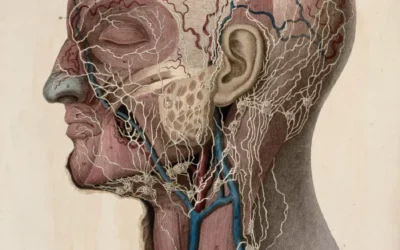

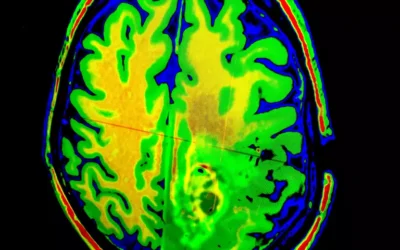
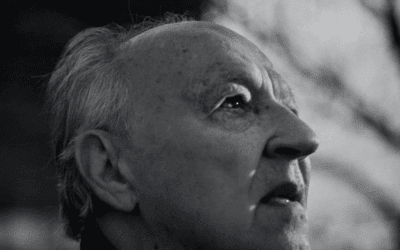





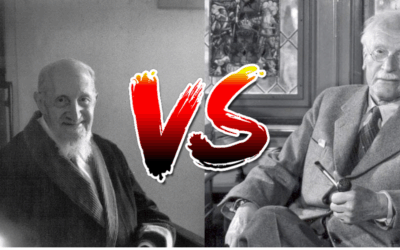









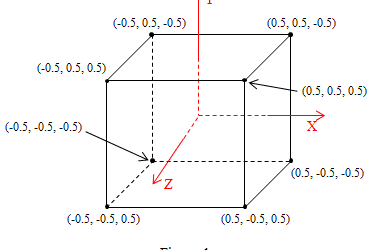


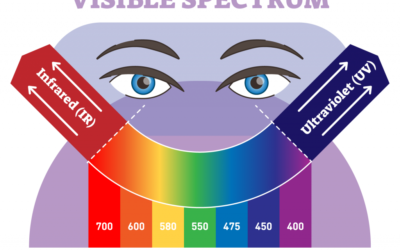

0 Comments